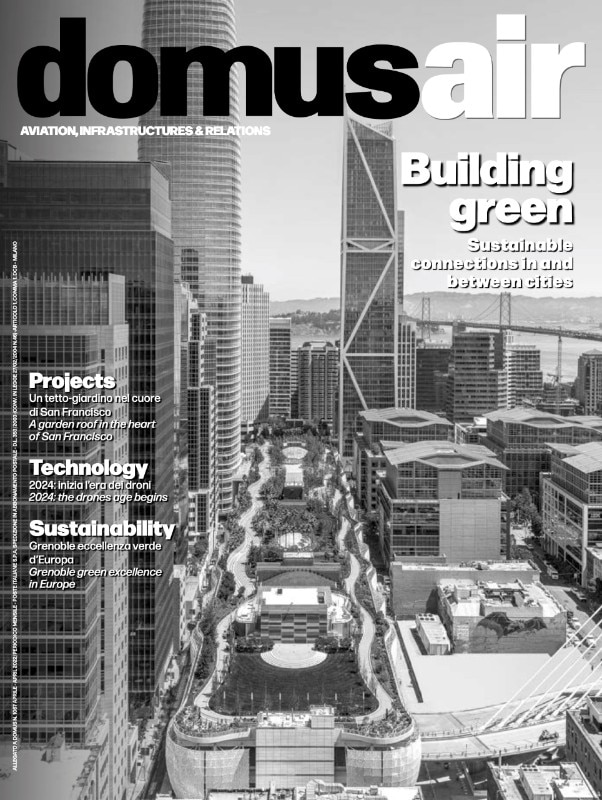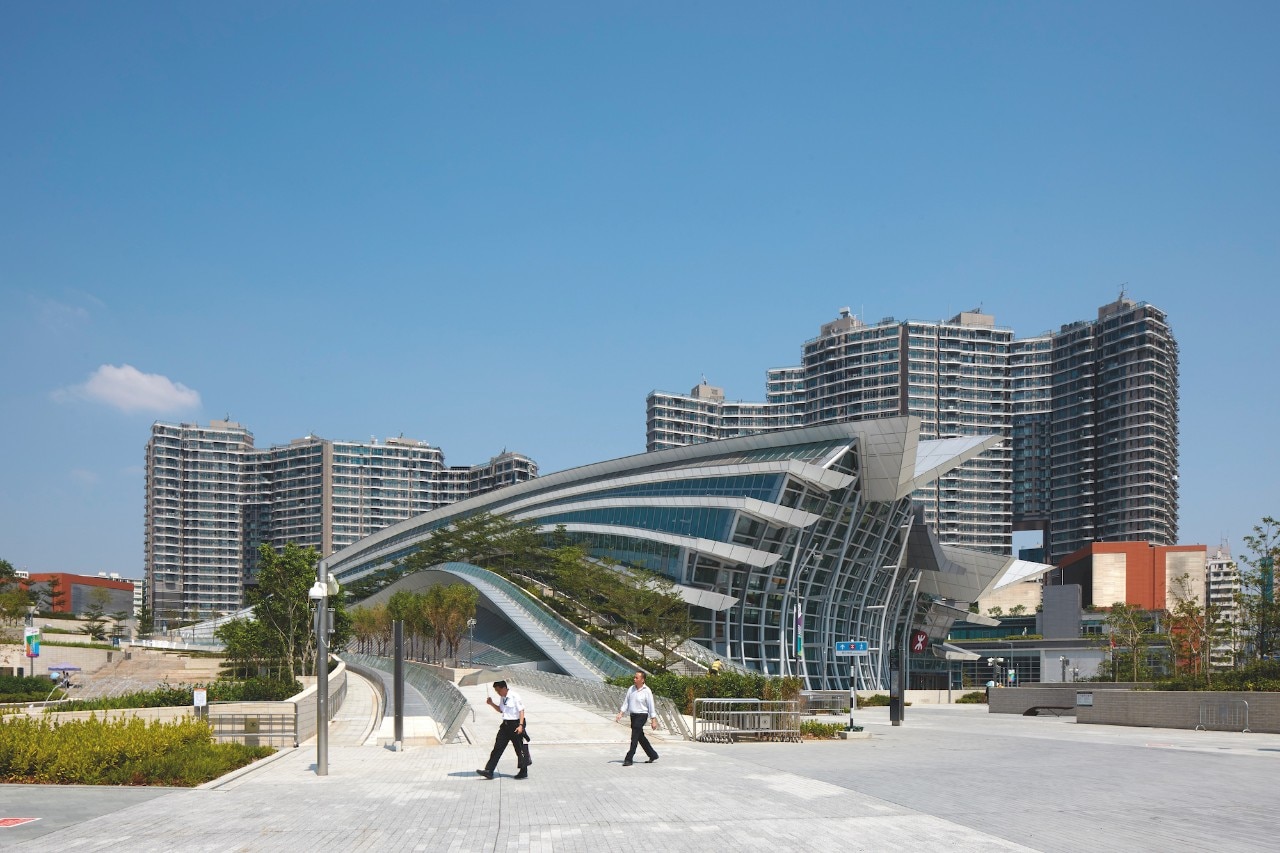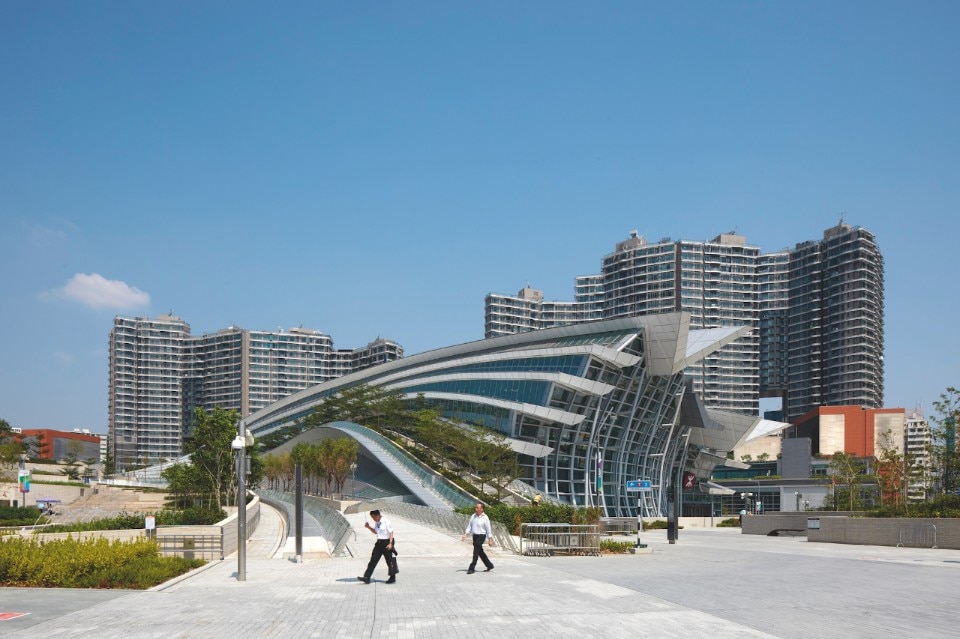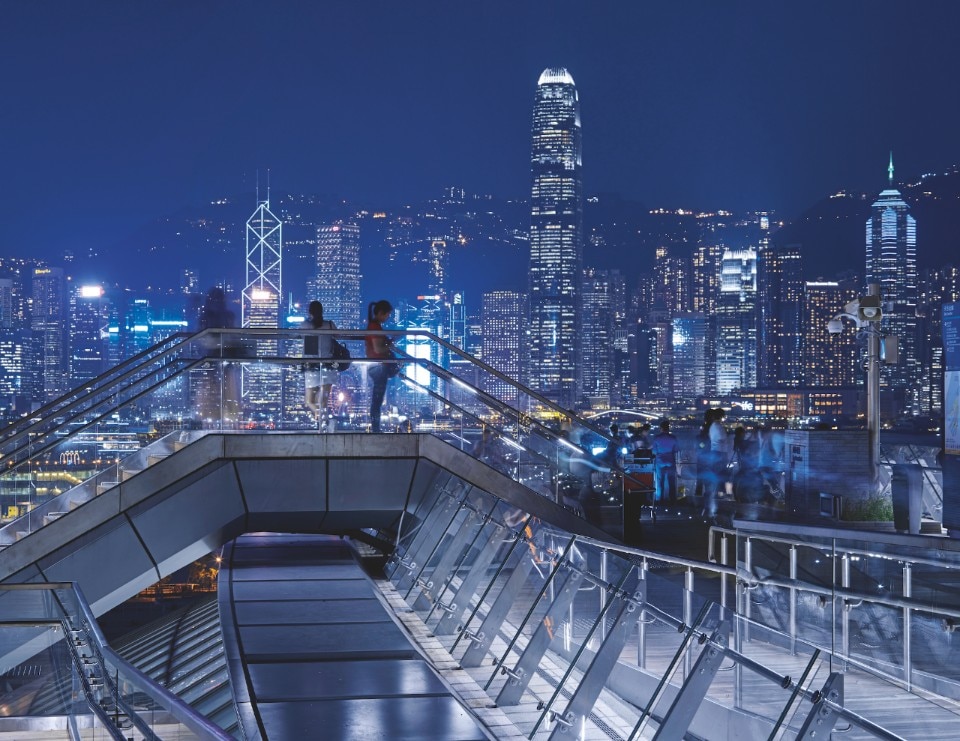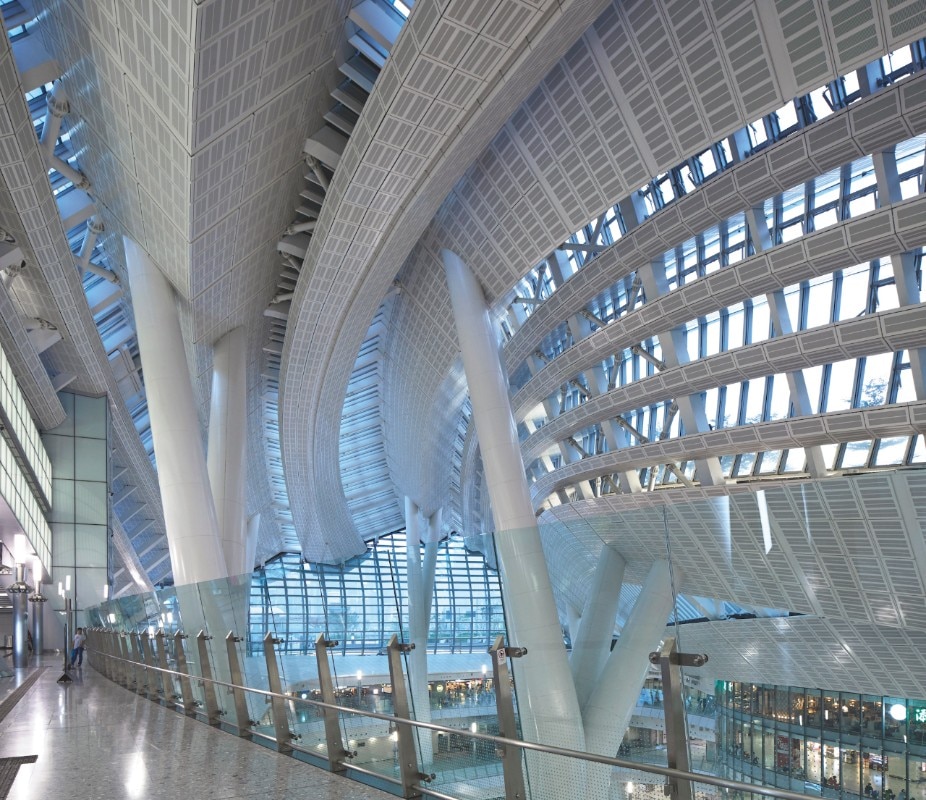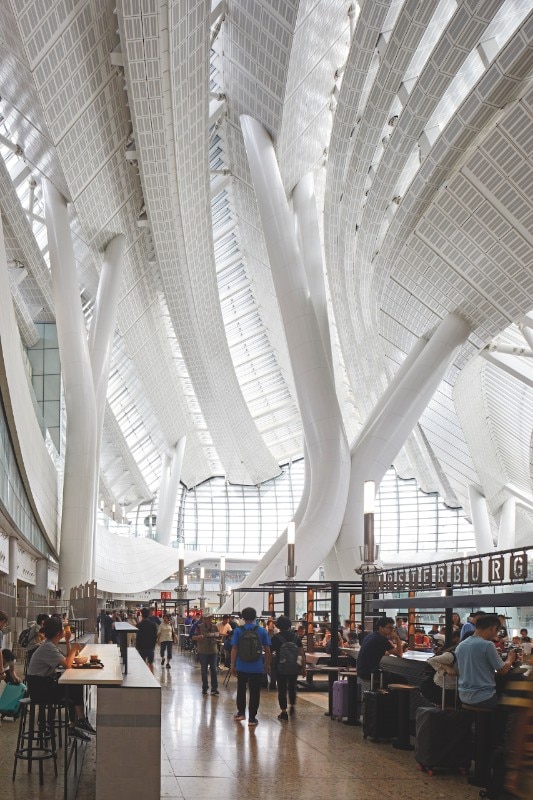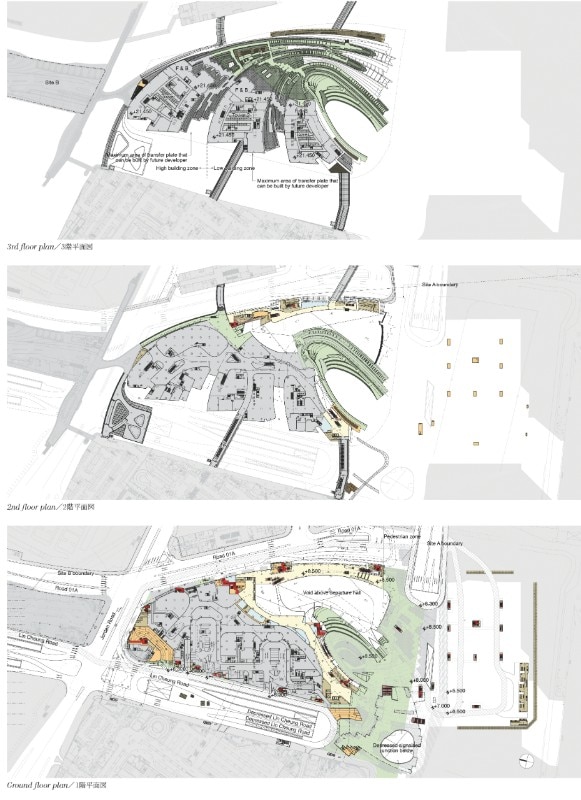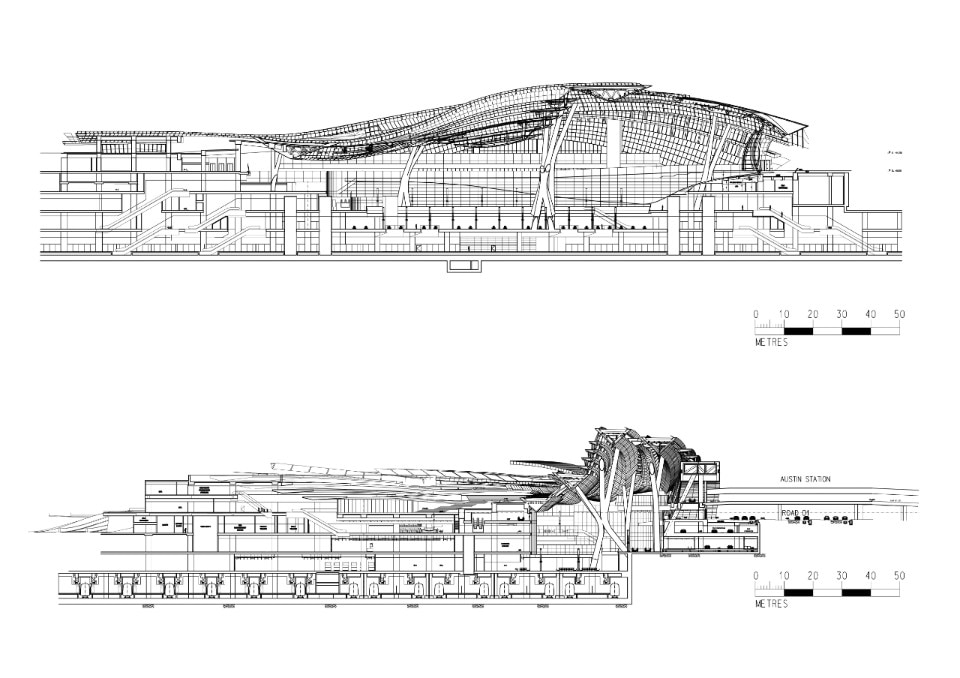This article was originally published on DomusAir n.4, April 2022.
Hong Kong is one of the densest cities in the world. Although surrounded by amazing green hills, internally its three largest parks add up to 40 hectares of open space. The opportunity of increasing greenspace in Hong Kong was critical to the success of West Kowloon Terminus project: by conceiving the station as a three dimensional open space as opposed to an object oriented roofscape, the project offered an additional 15% of open space over its three urban parks. On one level Hong Kong West Kowloon Terminus is the high speed rail connection to Mainland China to its North.
On another level it is a 6-hectare park, physically threaded into the life of the city and the harbourside: a new, urban open space almost half as large as Kowloon Park nearby to the East. It will be a new place in the urban landscape – one where people can play, discover and explore. This is a park in the sky, an undulating landscape affording all who visit – whether by day or by night – amazing views of the harbour and Central District’s glittering towers. The high-speed rail terminus station will connect Hong Kong to Beijing with the largest rail network in our history. Located centrally in Hong Kong within the city’s existing urban realm, the 430,000 square meters facility with fifteen tracks will be the largest below ground terminus station in the world. It became apparent that the WKT facility needed to function as a built ambassador for the city of Hong Kong as the gateway into Hong Kong.
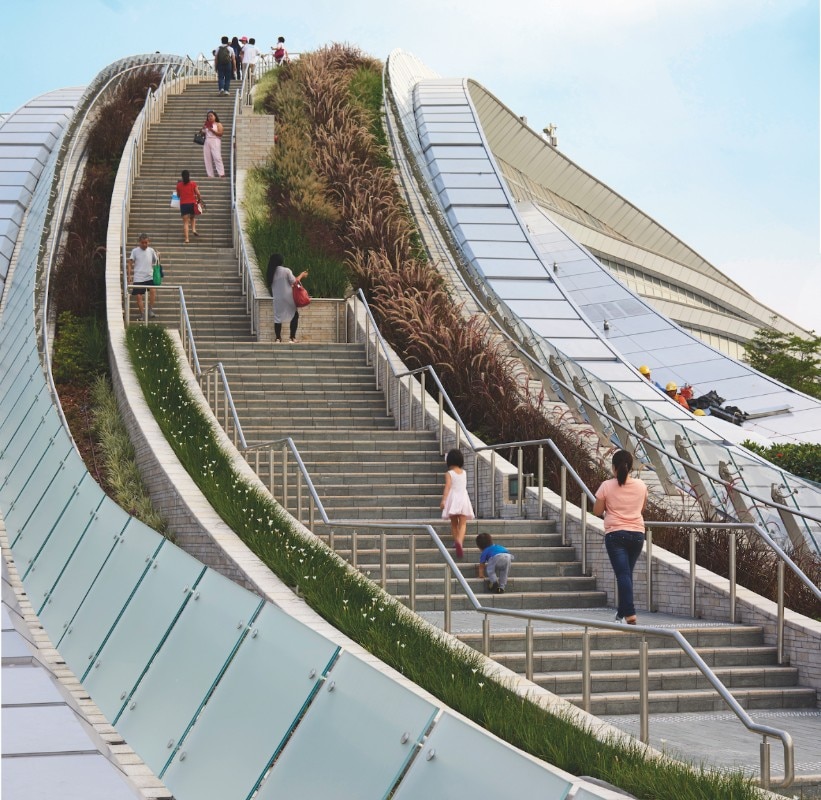
As the “gateway” to Hong Kong, it was considered vital to connect the station with the surrounding urban context and make one aware that whether arriving or departing – “You are in Hong Kong”. In order to do this, the design compacted all of the supporting spaces more efficiently to allow for a very large void down into the departure hall below as well as apertures down to the track platforms. The outside ground plane bent down to the hall and the roof structure above gestures toward the harbor. The result is a 45 meter high volume which focuses all attention through the south façade toward views of the Hong Kong Central skyline and Victoria Peak beyond.
It will be the largest below ground terminus station in the world
The terminus station has two target destinations: regional commuter trains and long-haul high speed trains. The commuter trains go across Hong Kong territory to Shenzhen, a booming China border city, and further to the north to Canton, the capital of Guangzhou. The organization of the design was inspired by converging forces all oriented toward Hong Kong - likened to the converging tracks coming into the terminus station itself. The project maximizes civic gestures both internally and externally. The station is sculpted out of the energy of these moves and strongly defines its motive to open up and focus toward Victoria Harbor and the Hong Kong skyline. The culturally district of WKCD is invited into the site.
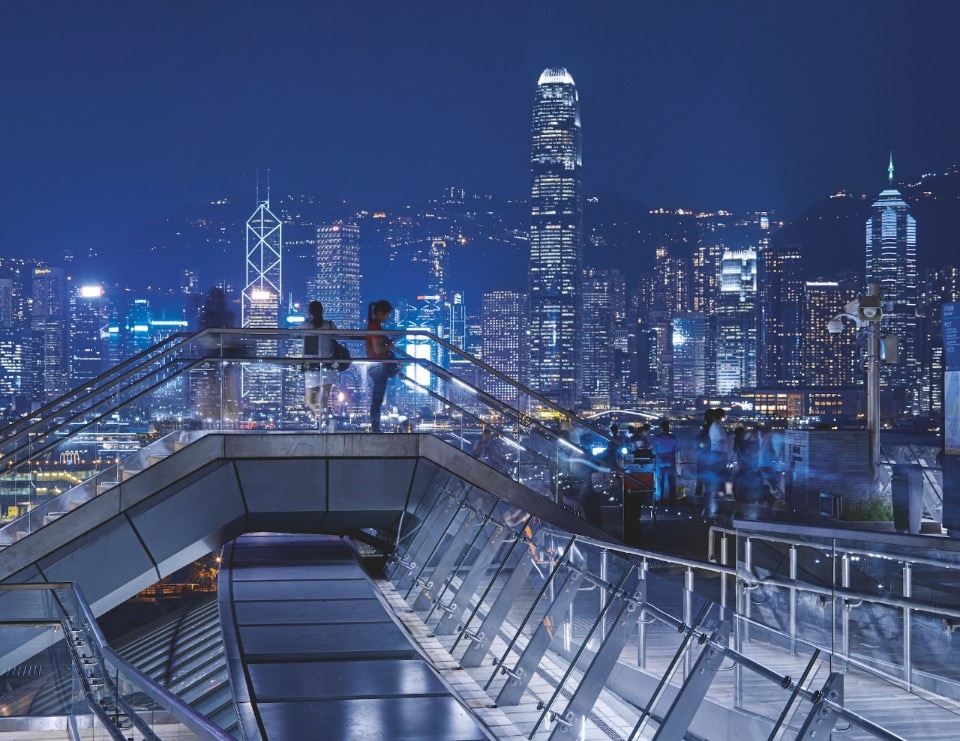
A large “Civic Square” opens up toward the cultural district and is defined on the other side with its own outdoor performance amphitheatre. The image of the station will be preserved in the southeast corner of the site. The Civic Square will be defined by station entrances and station facilities on the east and west sides as well as adjacent, accessible paths moving up on top of the station into the green “roofscape”. The pedestrian flow into this amphitheatre continues up, accessing almost the entire roof top of the station itself in a highly vegetated sculpture garden and landscaped extension of the green below. The resultant open space is almost five times more area than an already ambitious mandate in the master plan.
The green space provides links flowing through the site to a Public Transport Interchange to the North, The Austin Station subway station to the East, The Kowloon Station Development and Elements Mall to the West as well as internal connections into the WKT station itself and its future commercial development. The culminations of these moves find themselves at an observation deck on top of the crest of the entrance building – twenty five meters above the Civic Square and forty five meters above the Departure Hall below. At the top there is the perfect overlook as an extension of the journey into Hong Kong, into and beyond the West Kowloon Cultural District, into and beyond Victoria Harbor and into and beyond the tower filled alleyways of Hong Kong. The station may be visible below as a reminder of where one came – but the future paths of discovery present themselves invitingly beyond...
